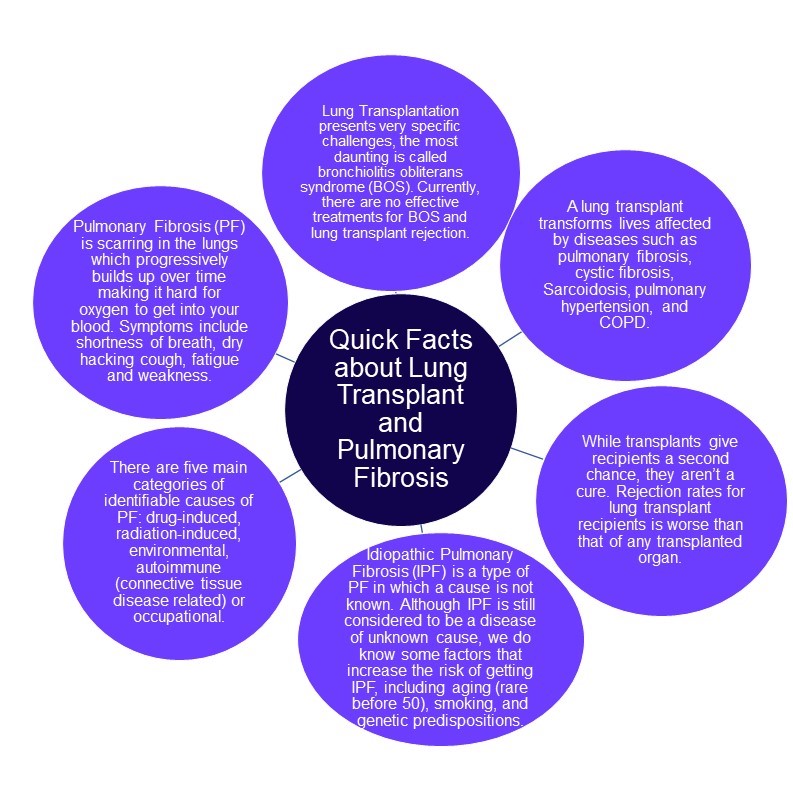
Lung transplantation is a treatment option for certain patients with advanced lung disease. It is mainly considered after other medical therapies have been exhausted. It is time to consider lung transplantation when life expectancy is predicted to be only 1 to 2 years without the transplant, or when your lung symptoms have severely limited quality of life. Significant improvements in lung transplant outcomes have been achieved due to changes in donor and recipient selection, use of various lung donor preservation technologies, peri-operative management and improved monitoring and management post-operative complications. Unfortunately, significant challenges persist. What has been deemed successful in the other solid organ transplant population, that success has not been extrapolated to the lung transplant population. Great effort is being taken to reduce the following complications that limit overall survival: primary graft dysfunction, acute cellular or antibody mediated rejection, infectious complications, post-transplant lymphoproliferative disease and chronic lung allograft dysfunction.
The multidisciplinary lung transplant teams continue to strive better outcomes through:
Patient Selection – improved fitness and physical readiness for lung transplantation. More centers are building strength and endurance to allow for the ability to pursue lung transplant even in the presence of requiring mechanical ventilation and/or extracorpeal membrane oxygenation (ECMO). In partnership with the transplant infectious disease colleagues, certain highly virulent infections can be controllable. Some centers have administered bacteriophage therapy to allow for the control of the infections.
Donor Selection – There are now a couple of lung perfusion options that are being utilized to assess the donor quality for transplantation; ex vivo lung perfusion (EVLP) and TransMedics. A new clinical trial will be evaluating the role of a negative pressure ventilation system; ex situ lung perfusion (ESLP). Only 2% of the lung transplants have been performed using donation after cardiac death (DCD) in the United States. Many centers are actively evaluating the logistics and outcomes using DCD. Some centers have actively expanded the donor pool for patients by utilizing lung donation from donors with confirmed active hepatitis C infection. Recipients are provided hepatitis C antiviral therapy for a 2-3 month duration that makes it essentially curable.
Chronic Lung Allograft Dysfunction (CLAD) remains a major barrier to longevity following lung transplantation. Repeated cellular and antibody mediated rejection, certain infections, intolerability to medications and gastroesophageal reflux disease are major risk factors for early development of CLAD. CLAD was formerly known and bronchiolitis obliterans syndrome (BOS), but more advances show that there are restrictive features, known as restrictive CLAD that account for 25-35% of CLAD, with the remainder being BOS. Various immunosuppressive agent have and continue to be evaluated to reduce CLAD. They are either an intravenous, oral or inhalation formulation. There is also the use of ultraviolet light therapy to help regulate the immune cells with the use of extracorpeal photopheresis. Additionally, the anti-proliferative agents used to treat idiopathic pulmonary fibrosis are being studies to help with restrictive CLAD.
We hope that the Lung Transplant Week will help expand the lung transplant needs for patients with advanced stage lung disease. The continued partnership among the transplant centers, organ procurement organizations, research facilities and patient advocacy groups will continue to advance lung transplant outcomes.




